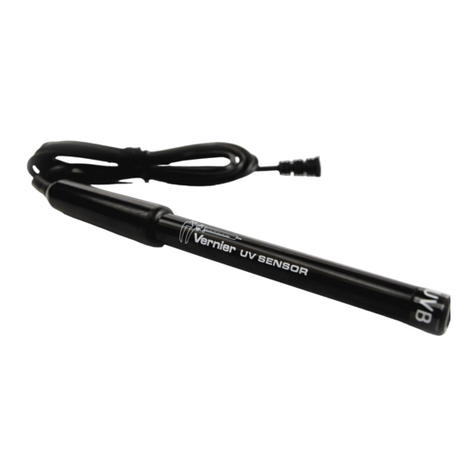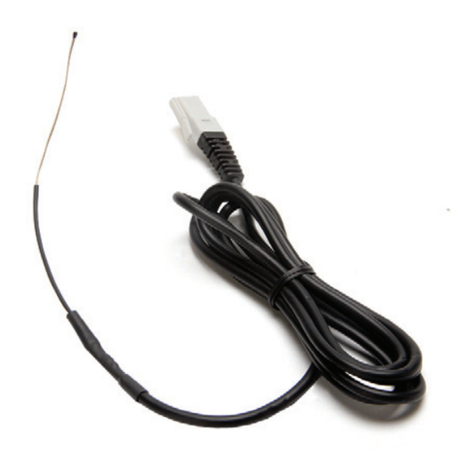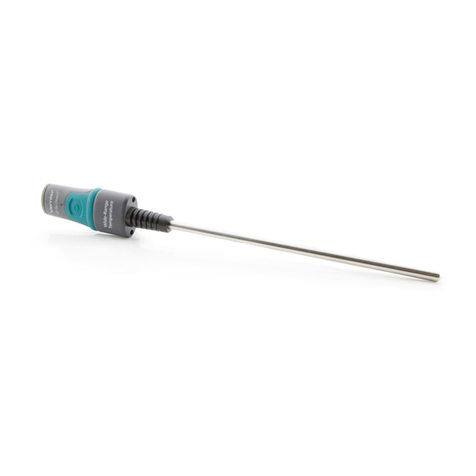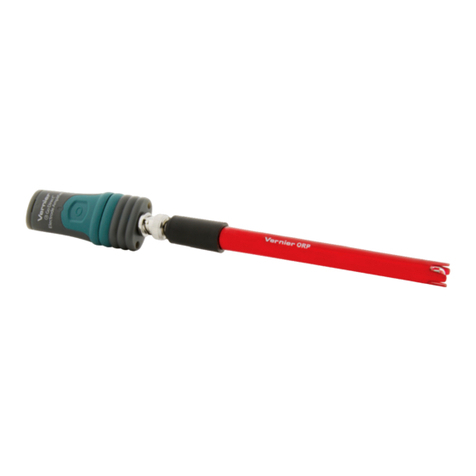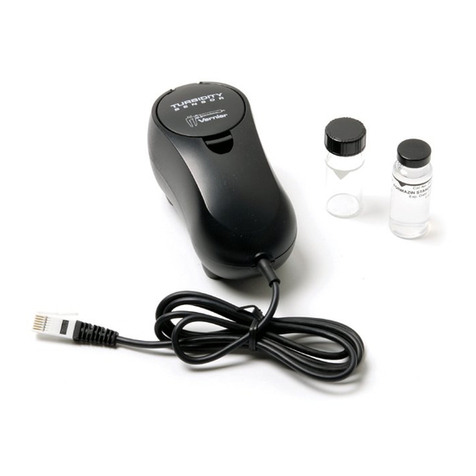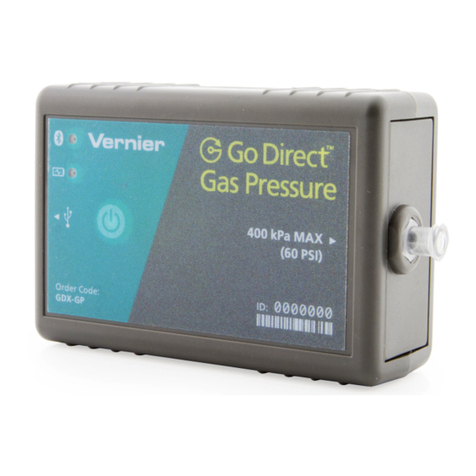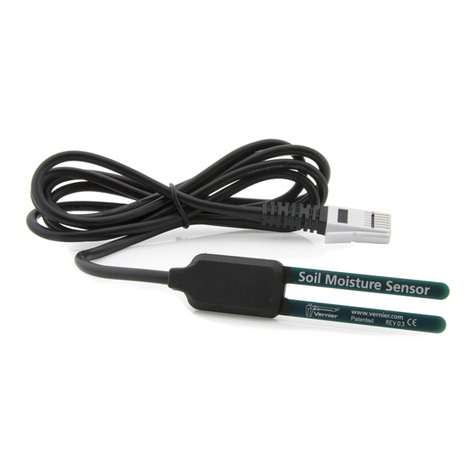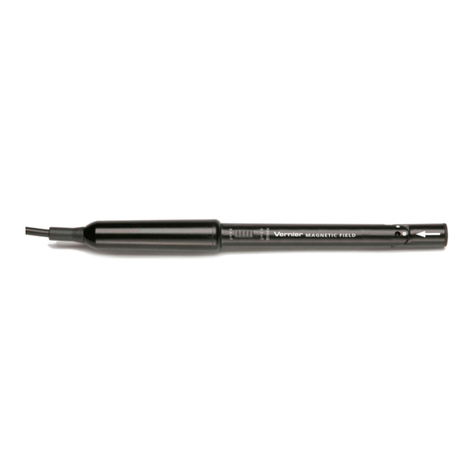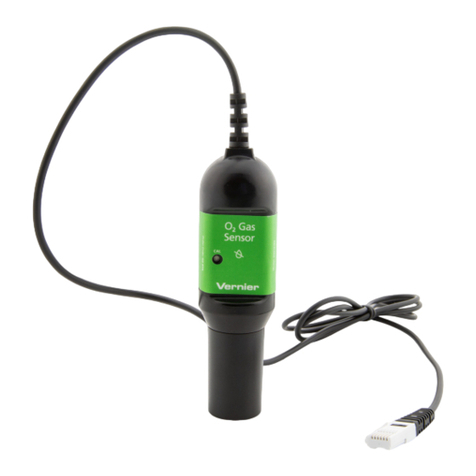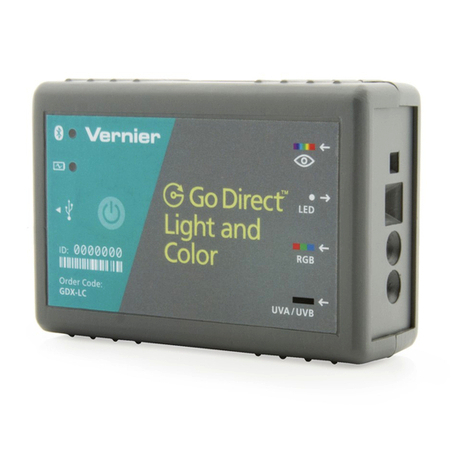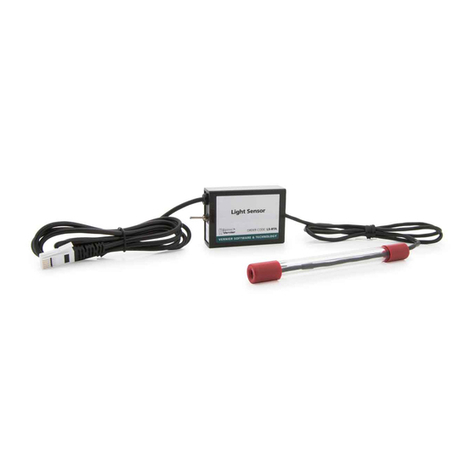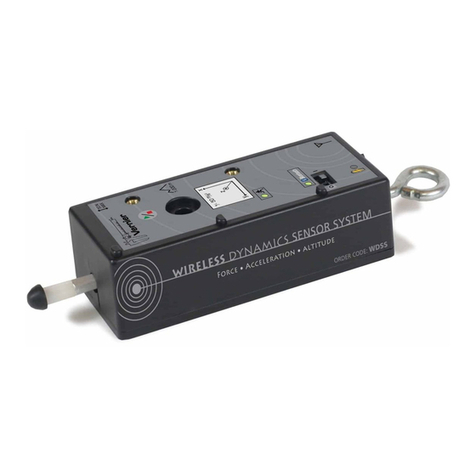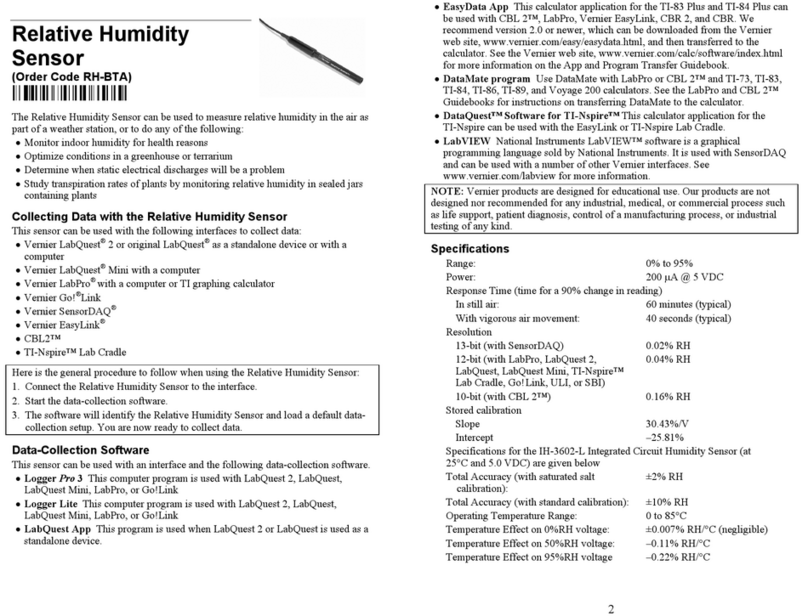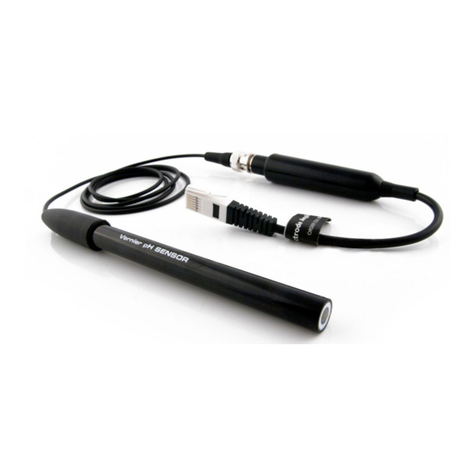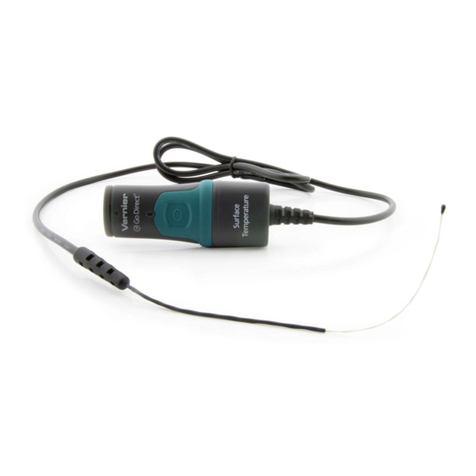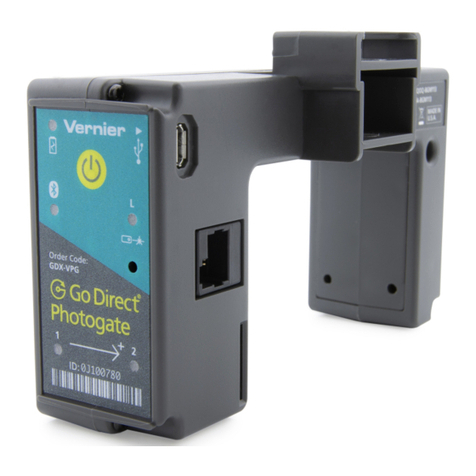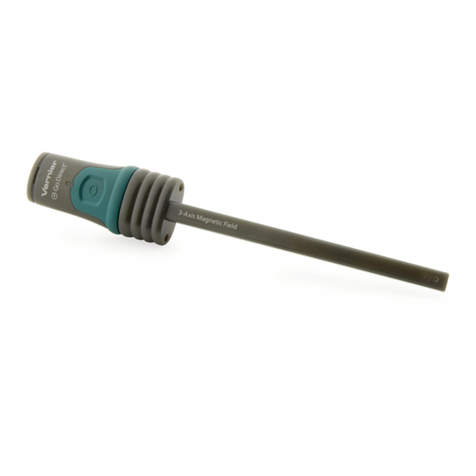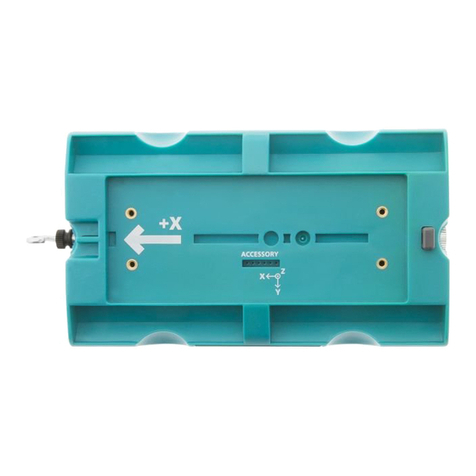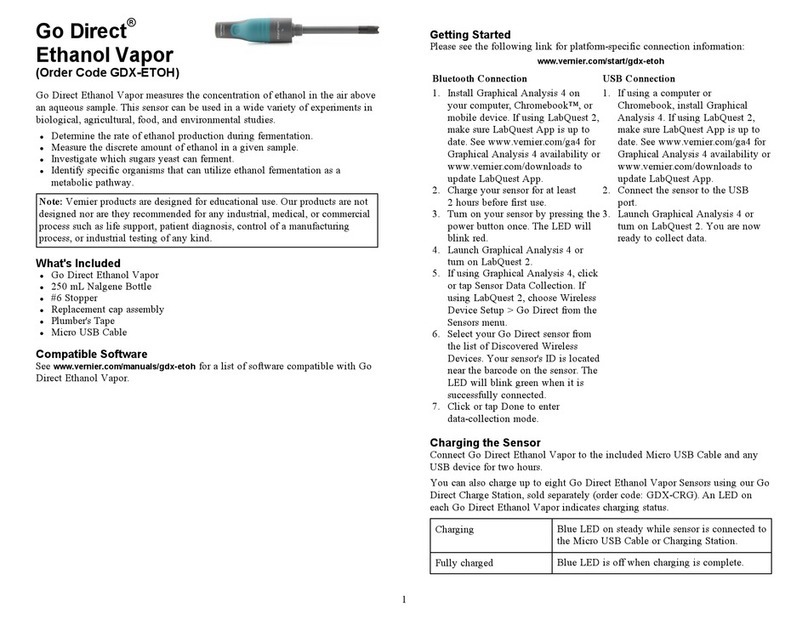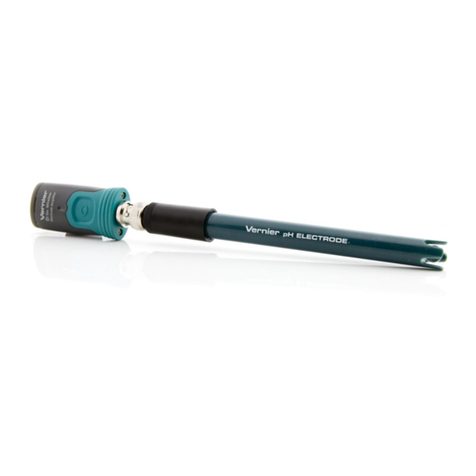
1
lSince the sensor is capable of measuring very small amounts of charge, it is
critical to begin experiments by zeroing the sensor.
lYou must be careful when handling the leads or you may alter the readings
with stray charge. The insulator on the clip lead quickly becomes oily from
handling, and fingers often carry small amounts of charge at high potential
that can easily leak through the insulator and affect your reading. The best
way to minimize this is by grounding your fingers, or wearing a grounding
strap on your wrist, to remove any charge before releasing the positive lead
from its ground connection. Start recording data before removing the lead
from ground so you will be aware if any stray charge accumulates before
making your connection. When connecting to static sources (not a fixed
voltage like a battery), the Reset button can be used while connected to a
passive charge receptor. Make sure the output reads zero after reset.
lThe sensor is not differential; therefore the negative (black) side is always at
ground potential. The supplied cable is shielded and has a low leakage
dielectric. When using other cables, the unit should be tested to make sure
the cable does not allow excessive leakage currents
lThe negative (black) lead is the ground connection. The effects of stray
static charges will be minimized by connecting the black lead to a metal
ground plane below your experiment, such as a sheet of aluminum foil.
lSynthetic clothing can carry significant charge, as can the experimenter’s
body. Grounding the experimenter by using a ground strap on one wrist will
help.
lWhen not using a Faraday Pail and ground plane, it helps to connect a metal
cup to the positive (red) lead. This cup adds negligible capacitance to the
system, but makes it easy to see induced or deposited charges. Insulate the
cup from the ground plane using a glass jar or beaker. Plastic does not work
well because it will accumulate stray charge quickly.
lComplete all experiments quickly. Due to leakage currents in the cable and
apparatus, the reading will rarely be reliable after 15 seconds.
Tips for Use with a Faraday Pail and Ground Plane
lUse of this sensor is simplified with the aid of a Faraday pail and ground
plane such as found in the Vernier Electrostatics Kit (ESK-CRG).
lSince the sensor is capable of measuring very small amounts of charge, it is
important to begin experiments by zeroing (resetting) the sensor. Simply
press the Reset button on the sensor for a few seconds to zero the equipment.
(Pressing the Reset button, internally shorts the leads, shorts the internal
input capacitor and the internal integrator capacitor.)
lThe sensor should be zeroed after initial power up.
lThe sensor must be zeroed whenever a new range setting is chosen.
lDuring data collection, monitor the sensor reading. If an excess charge
develops on the sensor, zero the sensor prior to a new data-collection run.
Charge Sensor
(Order Code CRG-BTA)
The Charge Sensor is used as an
electronic electroscope. Unlike a
traditional electroscope, the Charge Sensor can make quantitative measurements.
Numerical measurements improve many electrostatics experiments, such as
charging by induction, charging by friction, and charging by contact. The sensor
can also be used to measure charge polarity.
An extremely high impedance voltage sensor with a 0.01µF input capacitor
makes these measurements possible. The sensor has two operating ranges and a
zeroing switch to discharge the input capacitor.
Note: Vernier products are designed for educational use. Our products are not
designed nor recommended for any industrial, medical, or commercial process
such as life support, patient diagnosis, control of a manufacturing process, or
industrial testing of any kind.
Compatible Software and Interfaces
See www.vernier.com/manuals/crg-bta for a list of interfaces and software
compatible with the Charge Sensor.
Getting Started
1. Connect the sensor to the interface (LabQuest Mini, LabQuest 2, etc.).
2. Start the appropriate data-collection software (Logger Pro, Logger Lite,
LabQuest App, or Graphical Analysis 4) if not already running, and choose
New from File menu. The software will identify the sensor and load a
default data-collection setup. You are now ready to collect data.
If you are collecting data using a Chromebook™, mobile device such as iPad®
or Android™ tablet, or a Vernier wireless interface, please see the following
link for up-to-date connection information:
www.vernier.com/start/crg-bta
Using the Product
Connect the sensor following the steps in the Getting Started section of this user
manual.
General Tips
lWhen the sensor is stored, it is a good idea to short together the leads in
order to protect the sensor from high static potential that could damage the
unit.
lPress the Reset button for a few seconds to zero the sensor.
lPressing and releasing the Reset button with the leads connected to a
voltage source such as a power supply or battery will cause an error in the
reading and is not recommended, because it will short the power supply as
well.
